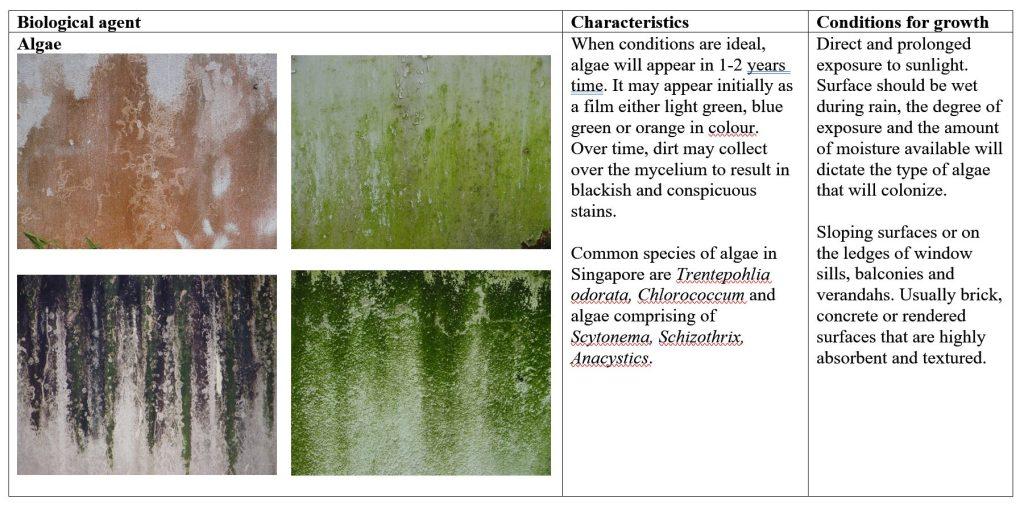Case 1
- Introduction
- Causes of Defects
- Good Practices
- Standards
- Maintenance and Diagnostics
- Remedial
- Similar Cases
- References
Cause of Defects
Algae are classed as aeroterrestrial as they spread through windborne spores and colonise in a biofilm on a surface, and when the conditions are susceptible, they will grow organically. They are photosynthetic and must have sunlight to continue growing. Although mostly green due to the presence of chlorophyll, black, blue, red, orange and yellow algae (depending on the number of other pigments within it) are found on all types of façade materials, including rendering, glass, aluminium and granite.
Algae thrive best where there is sun, moisture and nutrients. Dirt that is blown off the road and retained on façades becomes a source of nutrients. As such, algae are commonly found mainly outdoors on external façades. Common species of algae that may be found on façades are Trentepohlia odorata, Chlorococcum and algae comprising Scytonema, Schizothrix and Anacystics.
- Pipe leakage that may be due to poor construction or fixing of overhead pipes has resulted in the water leakage onto the false ceiling. Algae growth thus results due to the constant dampness in the false ceiling.
- Porous materials like ceiling boards made of Asbestos may have less resistance to algae growth under high moisture content or relatively humid environment which is present in wet areas of high-rise buildings.
- Lack of maintenance may lead to the growth of algae. If proper maintenance programme or auditing system exists to detect and repair the water leakage of overhead pipes, subsequent defects like this can easily be avoided.
